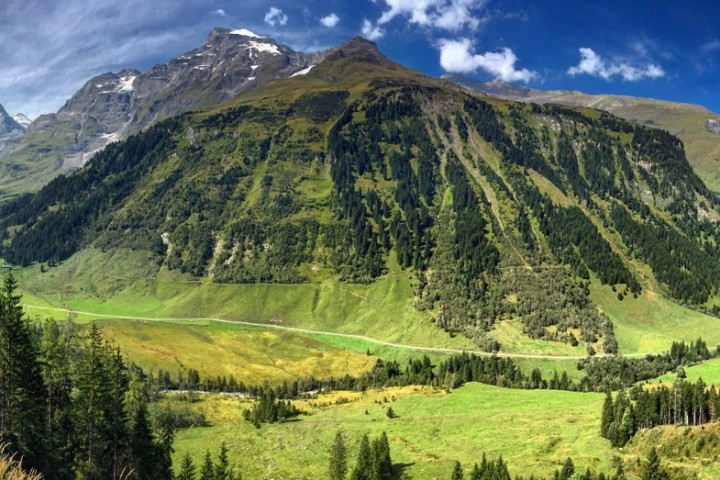Climate Change Causes Fundamental Shifts in the Chemistry of Mountain Soil

New research says the changes will likely displace some plants altogether and dramatically shift the range of others.
A warming climate will fundamentally change the chemistry of mountain soils by shifting the balance of nutrients, visibly disrupting fragile, high-elevation ecosystems of grasses, flowers and trees within decades.
Most of the world’s mountain regions are warming twice as fast as the global average, speeding up microbial activity. As a result, the ratio of two key nutrients, nitrogen and phosphorus, is shifting fast, according to University of Vermont researcher Nathan Sanders, one of an international team that studied soil chemistry in seven mountain regions around the world over the course of a growing season. The changes will likely displace some plants altogether and dramatically shift the range of others, he said.
The results show how some climate change impacts will occur on a global scale. The scientists made the same findings at mountain plots In Japan, British Columbia, New Zealand, Patagonia, Colorado, Australia, and Europe: As temperatures warm, nitrogen increases, but phosphorus does not, decoupling a critical cycle for plants, Sanders said.
The study, published last week in the journal Nature, suggests that future climate warming will substantially alter the way that these sensitive ecosystems function.
The new findings suggest that, as temperatures increase, plants that thrive at lower elevations will quickly move up the mountains, where the supply of nitrogen is growing.
“We’re seeing these things become unlinked and trying to understand the consequences,” Sanders said. The results are especially convincing because the international team made the same findings at so many different sites around the globe. “We studied places with different geology, different plant communities, and yet we saw the same thing over and over again.”
Instead of heating patches of ground with lamps or greenhouses, this team of scientists used elevation as a surrogate for climate warming. Temperature changes with elevation at a steady, known rate. Factoring that rate into a simple equation with the projected rate of global warming shows that any given location will have the same temperature in 80 years as that of an elevation that is 300 meters lower, Sanders explained.
Earlier experiments by other researchers have heated soil with lamps or greenhouses; in some cases, they found similar results, but each of those earlier instances can offer only local snapshots in time.
The new findings suggest that, as temperatures increase, plants that thrive at lower elevations will quickly move up the mountains, where the supply of nitrogen is growing as more organic matter is decomposed by microbes.
“We can assume there might be implications for biodiversity. One striking observation was the clear upward migration of species. This might affect biodiversity at higher elevation,” said Michael Bahn, a climate scientist at the University of Innsbruck, Austria. “Plants adapted to lower elevations will grow faster and could outcompete rare plants higher up.
The changes in plant communities could send an ecological wave rippling through mountain ecosystems, affecting other species like insects and birds, Bahn said.
Related research shows how that can happen. One study in Colorado used temperature and plant data going back to the 1970s to link a sharp decline in butterfly populations with global warming. Another study found a link between warming temperatures, wildflowers and breeding hummingbirds.
The new Nature study projects impacts going forward using elevation as a proxy for warming over time, but other research has documented equally significant soil chemistry changes in the mountains. In Germany, Munich Technical University scientists used soil study plots with data going back to the 1980s to show how organic carbon has declined by 14 percent in mountain soils, also because of increased microbial activity spurred by warming.
Beyond the soil chemistry changes, warming has already changed mountain landscapes in dramatic ways. Giant landslides in the Alps started in areas where glaciers and permafrost have melted so fast that plants haven’t had a chance to catch up and protect the ground from erosion. The sludge and gravel exposed by the melting ice are easily mobilized by increasing extreme rains in summer.
The two-mile landslides damaged bridges and roads and carried glacial material all the way to valley bottoms. The analysis of satellite images from the European Space Agency’s Sentinel program provides “timely evidence that climate change is reshaping Austria’s mountains, especially the highest regions,” said Anette Bartsch, a climatologist with Austria’s federal weather and climate bureau.
All the research, taken together, shows how many familiar mountain landscapes are likely to change irrevocably by the end of the century.
Source:psmag.com
